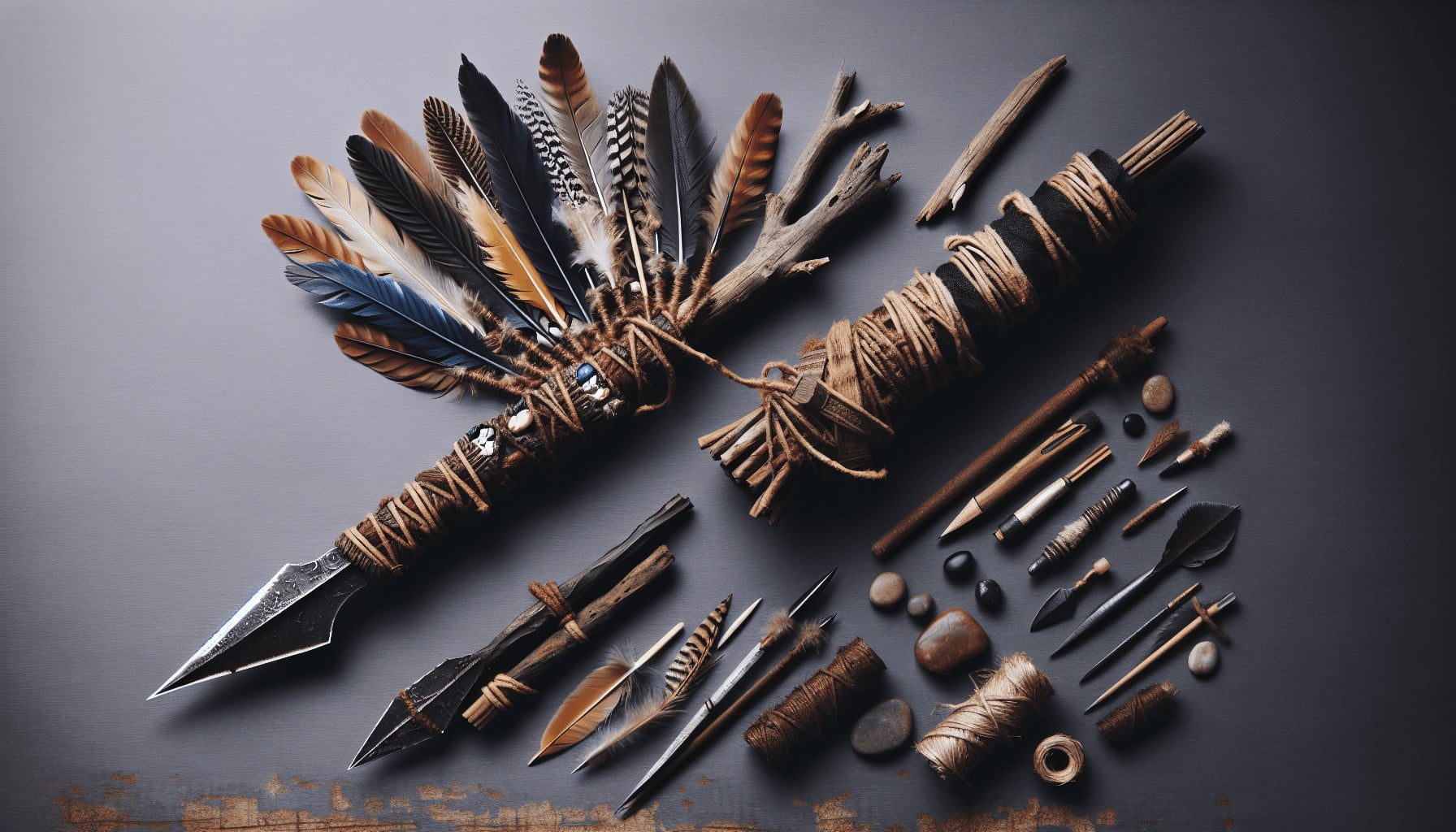In a survival situation, knowing how to improvise weapons can be a crucial life-saving skill. Whether you find yourself lost in the wilderness or facing a dire situation, being able to create weapons from everyday objects can provide you with a means of defense and a way to secure food and resources. From crafting a spear from a sturdy stick to fashioning a slingshot using rubber bands and a branch, this article will guide you through the art of improvisation, ensuring your survival in the most challenging of circumstances.

Introduction
Survival situations can be daunting and unpredictable, and having the ability to improvise weapons can make a significant difference in your ability to defend yourself and increase your chances of survival. Understanding the importance of improvising weapons and knowing the basic rules of weapon improvisation can be crucial in such scenarios. Whether you find yourself in the wilderness or an urban environment, this article will guide you through various techniques and strategies to help you improvise weapons effectively.
Assessing Your Surroundings
Before you begin improvising weapons, it is vital to assess your surroundings and evaluate the available resources. Take a moment to carefully analyze your environment and identify potential sources of weaponry. Look for objects that can be utilized as sharp and pointed weapons, blunt and heavy objects, or flexible and whipping objects. This assessment will allow you to make the most of the resources at your disposal and increase your chances of finding suitable tools for self-defense.
Using Everyday Items as Weapons
In a survival situation, everyday items can quickly turn into powerful weapons. By recognizing the potential of seemingly harmless objects, you can effectively use them to protect yourself. Sharp and pointed objects, such as knives or broken glass, can be utilized for thrusting or slashing attacks. Blunt and heavy objects, like rocks or a sturdy stick, can be used to strike and incapacitate your assailant. Additionally, flexible and whipping objects, including belts or electrical cords, can be employed for both defensive and offensive purposes. Remember, creativity is key when using everyday items as weapons.
Creating Projectile Weapons
Crafting projectile weapons may sound challenging, but with the right knowledge, it can be accomplished even in a survival scenario. One such technique is to create a bow and arrow using natural materials like wood, vines, or string. This versatile weapon allows you to attack from a distance, giving you an advantage against opponents. Another option is to fashion a slingshot, utilizing elastic bands or strips of rubber and a sturdy pouch to launch projectiles with precision. Additionally, constructing throwing spears by attaching sharp objects to long sticks can provide you with an effective ranged weapon option.

Improvising Melee Weapons
When it comes to close-quarters combat, improvising melee weapons can significantly increase your chances of survival. A spear or pike can be fashioned by attaching a sharp object, such as a knife or broken glass, to the end of a sturdy pole. This weapon allows you to maintain distance and strike with accuracy. Crafting a shiv or dagger is another option, utilizing materials like bone or sharp stone. This compact weapon can be easily concealed and is ideal for surprise attacks. Additionally, building a club or mace by attaching a weight, like a rock or heavy object, to a sturdy handle will provide you with a powerful striking weapon.
Understanding Self-defense Techniques
Improvising weapons is only half the battle; mastering self-defense techniques is equally important. Start by learning basic strikes and blocks to effectively counter an attack. Practice utilizing your body weight and force to maximize the impact of your strikes. Additionally, understanding disarming techniques can be invaluable when facing an armed opponent. By gaining proficiency in self-defense techniques, you can effectively utilize the improvised weapons at your disposal.
Improvising Traps and Snares
In a survival situation, setting up traps and snares can serve as defensive measures and help protect your camp or hideout. Tripwire traps can be created by tying a strong, thin line at ankle height between two sturdy objects. When triggered, this trap can cause a person to trip, giving you an advantage. Pitfall traps involve digging a deep hole and covering it with lightweight materials like leaves or branches. Once your opponent falls into the trap, it becomes difficult for them to escape. Constructing deadfall traps, where a heavy object falls upon triggering, can also be effective in immobilizing adversaries.
Improving Weapons of Opportunity
In a survival scenario, it is essential to make the most of the tools available to you. Modifying everyday tools for combat can provide you with an advantage. For example, attaching blades to the end of a long pole can transform a garden hoe into a makeshift halberd. Similarly, reinforcing the handle of a shovel with sturdy materials can create a powerful makeshift weapon. Enhancing improvised weapons can be as simple as adding weight or grip to improve their effectiveness.
Proper Weapon Handling and Safety
While improvising weapons, it is crucial to prioritize weapon handling and safety. Become familiar with the proper techniques for handling each type of weapon you have improvised. Practice your grip and stance to ensure maximum control and effectiveness. Additionally, taking safety precautions, such as wearing protective clothing or gloves, can minimize the risk of injury during combat. Remember, ensuring your safety while using improvised weapons is of utmost importance.
Legal Implications and Moral Considerations
In any survival situation, it is vital to understand local laws and regulations regarding self-defense. Different jurisdictions have various rules regarding improvised weapons, and it is essential to abide by these laws to avoid legal complications. Additionally, consider ethical and moral dilemmas when improvising weapons. While the goal is to protect yourself, it is important to assess the intentions and potential consequences of your actions.
In conclusion, the ability to improvise weapons is a valuable skill in any survival situation. By understanding the importance of improvising weapons, evaluating your surroundings, and utilizing everyday objects, you can effectively defend yourself. Crafting projectile and melee weapons, mastering self-defense techniques, and improvising traps and snares can further enhance your survival skills. Remember to prioritize proper weapon handling and safety, as well as consider the legal implications and moral considerations. With these strategies and techniques, you can confidently face a survival situation and increase your chances of overcoming adversity.
